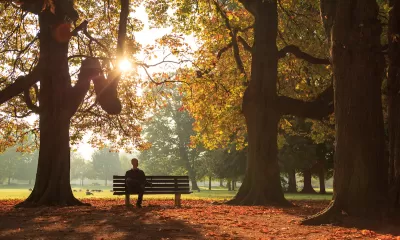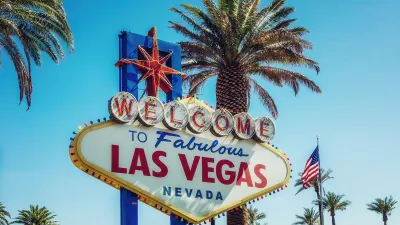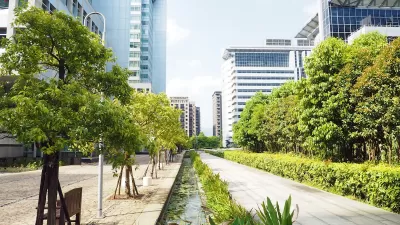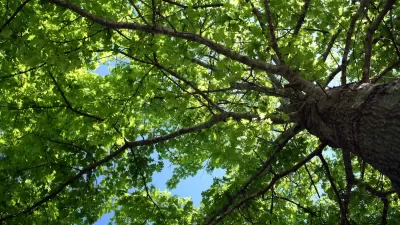Healthy, robust tree canopies can reduce the impacts of extreme heat and improve air quality.

A new policy resource from the Smart Surfaces Coalition offers guidance for cities wanting to grow and maintain their tree canopy to mitigate heat and manage stormwater.
As Robyn Griggs Lawrence explains in Smart Cities Dive, the document “includes policy options, ordinance language, resources and case studies of successful strategies that local officials can use to strengthen tree canopies in their communities.”
Trees are one relatively low-cost way for cities to mitigate the impacts of extreme heat and reduce air pollution. “In Dallas, planting and protecting trees and installing cool roofs and paving materials reduced heat deaths by 22%,” according to the article. “In California, every dollar spent on tree maintenance generated $5.82 in benefits in the form of energy savings, carbon dioxide removal, air pollution uptake and release, rainfall interception, and property values, a USDA Forest Service study found.”
The guide explains how cities can use zoning tools such as Urban Forest Overlay Districts to expand and preserve their tree canopy and how to finance long-term maintenance. Access the full guide via the source article.
FULL STORY: New policy resource helps cities finance and maintain tree canopies

Planetizen Federal Action Tracker
A weekly monitor of how Trump’s orders and actions are impacting planners and planning in America.

Restaurant Patios Were a Pandemic Win — Why Were They so Hard to Keep?
Social distancing requirements and changes in travel patterns prompted cities to pilot new uses for street and sidewalk space. Then it got complicated.

Map: Where Senate Republicans Want to Sell Your Public Lands
For public land advocates, the Senate Republicans’ proposal to sell millions of acres of public land in the West is “the biggest fight of their careers.”

Maui's Vacation Rental Debate Turns Ugly
Verbal attacks, misinformation campaigns and fistfights plague a high-stakes debate to convert thousands of vacation rentals into long-term housing.

San Francisco Suspends Traffic Calming Amidst Record Deaths
Citing “a challenging fiscal landscape,” the city will cease the program on the heels of 42 traffic deaths, including 24 pedestrians.

California Homeless Arrests, Citations Spike After Ruling
An investigation reveals that anti-homeless actions increased up to 500% after Grants Pass v. Johnson — even in cities claiming no policy change.
Urban Design for Planners 1: Software Tools
This six-course series explores essential urban design concepts using open source software and equips planners with the tools they need to participate fully in the urban design process.
Planning for Universal Design
Learn the tools for implementing Universal Design in planning regulations.
Heyer Gruel & Associates PA
JM Goldson LLC
Custer County Colorado
City of Camden Redevelopment Agency
City of Astoria
Transportation Research & Education Center (TREC) at Portland State University
Camden Redevelopment Agency
City of Claremont
Municipality of Princeton (NJ)





























